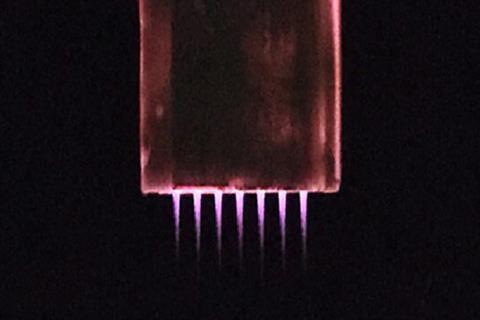
A compact device that fires jets of plasma can be used to randomly mutate the DNA of cultured organisms. The approach offers a cheap, safe and simple way to find beneficial and improved mutant strains of microbes for industry and biomedicine.
Genetic engineers commonly use the latest gene editing technologies such as Crispr to selectively modify the genetics of an organism. However, such rational methods require knowledge of what you are targeting and why. Conversely, random mutagenesis can be a useful scatter-gun approach – simply induce mutations in an organism and see what happens.
Random mutagenesis has traditionally been achieved either chemically, using toxic chemicals such as alkylating agents and azides, or by physically exposing organisms to DNA-damaging radiation. But these clearly present health and safety hazards to those undertaking the experiments. Moreover, using radiation is expensive and requires specialised knowledge and security protocols.
Now, bioengineer Yong-Su Jin and electrical engineer Sung-Jin Park at the University of Illinois, Urbana-Champagne, US, have teamed up with colleagues to develop a new compact machine that uses an array of atmospheric room temperature plasma (ARTP) jets to induce random mutations in cultured microorganisms.
‘Our device aims to make mutagenesis more accessible and practical for various applications in biotechnology,’ says Jin. ‘We also wanted to make a tool that’s more in tune with current environmental and safety standards and capable of meeting the demands of modern research and industry.’
The ARTP device comprises an array of seven microchannels up to 8cm in length through which flows a gas mixture composed of commercially available noble gases and air. When high voltage pulses are applied, the ignited gases produce microscale low-temperature plasma jets as thin as a human hair. These shoot towards the target surface forming reactive species of nitrogen, oxygen and hydrogen in the plasma that bombard cells in culture and induce mutations in their DNA.
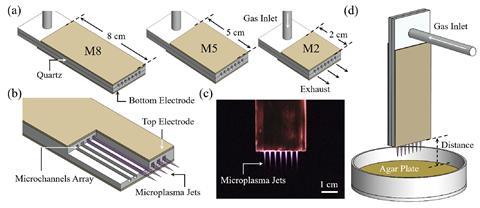
Using ARTP for mutagenesis is not new, however. Already applied as a sterilisation technique to kill pathogens, researchers in China discovered in 2014 that at sublethal levels it could be used to induce mutations rather than kill an organism. A commercial single jet ARTP mutagenesis device was subsequently developed, roughly 33cm3 in size and weighing 100kg.
The new microchannel arrays developed by Jin and Park’s team, however, mean a much smaller, lighter and more portable machine could be fabricated. The researchers say that it is also cheaper and consumes less energy, while offering superior control due to having an array of microplasma jets instead of one larger macroplasma jet.
After showing that the new device could produce reactive species to disrupt and unfurl a plasmid’s circular DNA, the team turned its attention to a species of yeast, Rhodosporidium toruloides. This choice was strategic, says Jin. ‘R. toruloides holds significant promise as a microbial cell factory for the production of chemicals, but it poses challenges in genetic engineering due to limitations in targeted genetic interventions,’ he explains.
By subjecting this yeast to the plasma jet, the researchers killed about 95% of the treated cells. However, in 0.44% of the survivors, mutations were induced in the carotenoid pigment biosynthesis pathway that were observed directly through changes in colony colours. ‘Such visual changes are indicative of genome-scale effects of the mutagenesis, providing a clear, observable phenotype that corresponded to genetic changes,’ says Jin.
‘This presents a completely novel and elegant approach for the random mutagenesis of organisms,’ comments Manel Camps, who investigates mutagenesis at the University of California, Santa Cruz, US. ‘It could well be universal and be applied to any organism with proper calibration. A possible advantage is that it may work well on naked DNA, which is very convenient for manipulation and transfer.’ Camps explains that other approaches usually require activation by a living organism’s metabolism and therefore don’t work on naked DNA.
Rodrigo Ledesma Amaro, a synthetic biologist at Imperial College London, UK, agrees. ‘This is a nice paper. It could be used to generate overproducer strains of molecules of interest and also understand the function of novel metabolic and regulatory enzymes.’
References
HG Koh et al, ACS Synth. Biol., 2023, DOI: 10.1021/acssynbio.3c00443
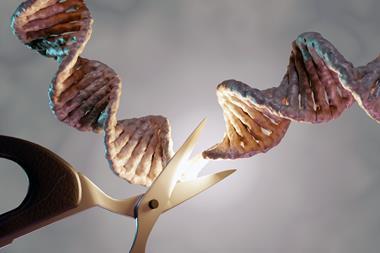


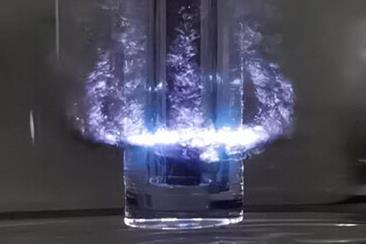
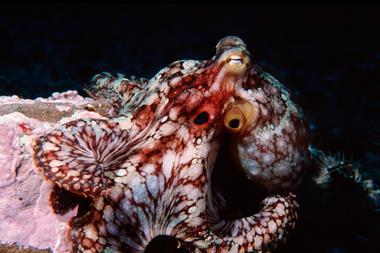







No comments yet